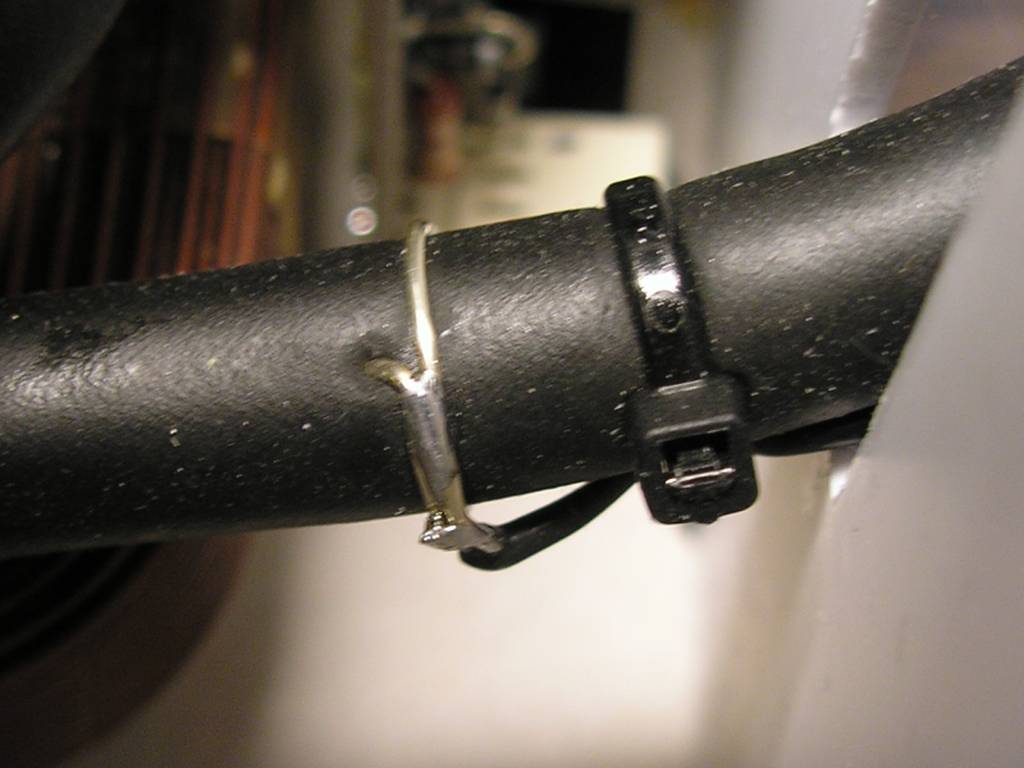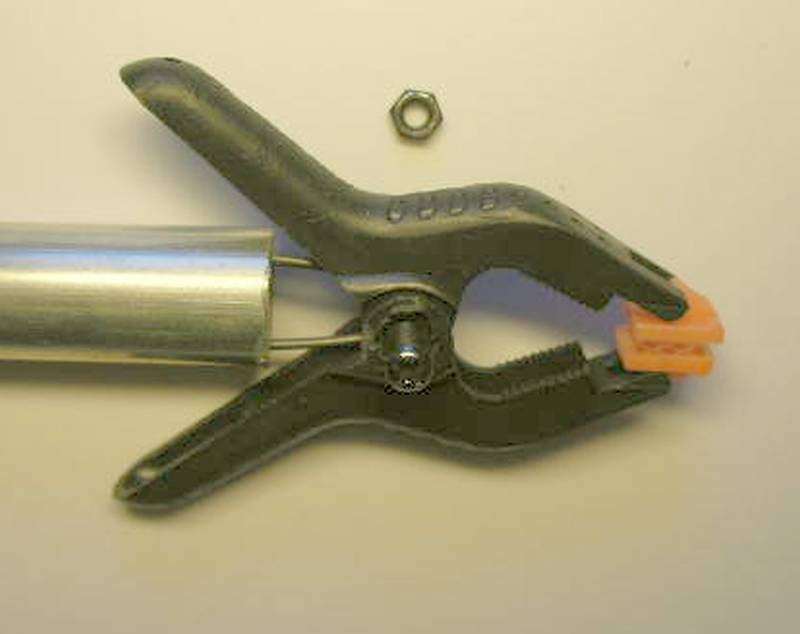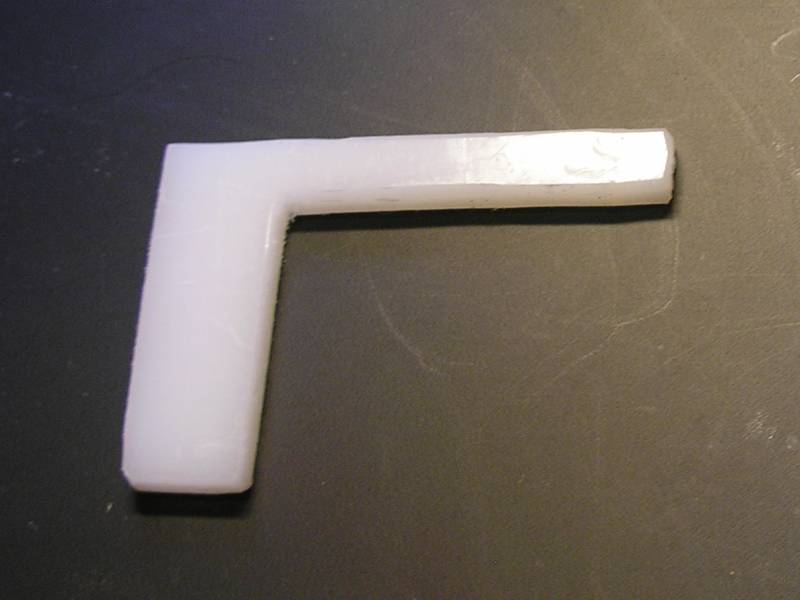DIY battery tab spot welder
- Spot welder controller board
- Spot welder features
- Microwave oven repair safety precautions
- Spot welder series configuration
- Spot welder opposed configuration
- High voltage!
- Questions
- Electrical data
- Maximum welding thickness
- Battery tab welding parameters
- Settings for nickel plated steel strips of 0.15mm thickness
- Spot welding notes
- Spot welder construction
I have developed the D.I.Y spot welder because I needed a special spot welder for the building of my Maxun One solar bike. It turned out that the spot welder is being built by many people worldwide, so I have published here the entire building project.
Spot welder controller board
Because the electronics was not so easy to build, I have made a spot welder controller board, which is for sale, together with some other parts.
 Arduino dual pulse spotwelder controller panel
Arduino dual pulse spotwelder controller panel
Spot welder features
A fine-spot welder is one of the few equipment where building yourself is cheaper than buying. There are already published a lot of DIY spot welders, this one has some unique features:
- It can be used in 2 welding applications: opposed and series configuration.
- The construction is kept very simple.
- Accurate electrode force adjustment.
- It has a solid electrode holder, made of a radiator earthing clamp.
- An Arduino microcontroller is used to set the weld time accurately.
- Creates a double pulse which improves clamping.
- The current can be reduced for welding sensitive parts.

Microwave oven repair safety precautions
Working on a microwave oven is extremely dangerous. You will normally NOT survive the high voltage, the available power of more than 1000W is enough to kill you instantly like an electric chair. Please read this article first.
 Microwave oven repair safety precautions
Microwave oven repair safety precautions
Spot welder series configuration


Spot welder opposed configuration


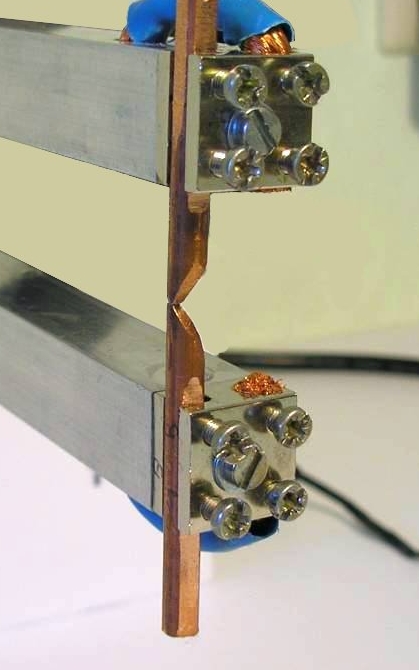
High voltage!
Pay attention: the PCB is directly connected to the mains, just the low voltage part is safe. Usage is at your own risk.
Questions
If you have any questions, please post them on instructables.com.
Electrical data
- Weld current: 1100A or 400A
- Open voltage: 2.6V
- Mains current during the weld pulse: 14A
- Quiescent current: 1.6A
Maximum welding thickness
Light duty portable spot welding guns have a welding current of at least 4000A, which allow welding of 2 x 1mm low carbon steel sheets. The DIY spot welder just delivers 1100A, which is fine for welding small electronic parts. Although I have seen that people have welded 2 x 0.75 mm sheets with this kind of spot welders.
Battery tab welding parameters
Settings for nickel plated steel strips of 0.15mm thickness
Most used are nickel plated steel strips with a thickness of 0.15 mm, these can be welded the best. You may have to experiment with the weld times and the electrode force, but start with these values:
- Weld electrode force 0.4kg (4N)
- Pre-weld time 50ms
- Pause 500ms
- Weld pulse time 100ms (50 to 250ms)
- Electrode tip diameter 1.5mm
- Electrode outer distance 5mm
Note: Nickel-plated steel strips are cheaper than pure nickel strips and have a higher resistance which makes welding easier.
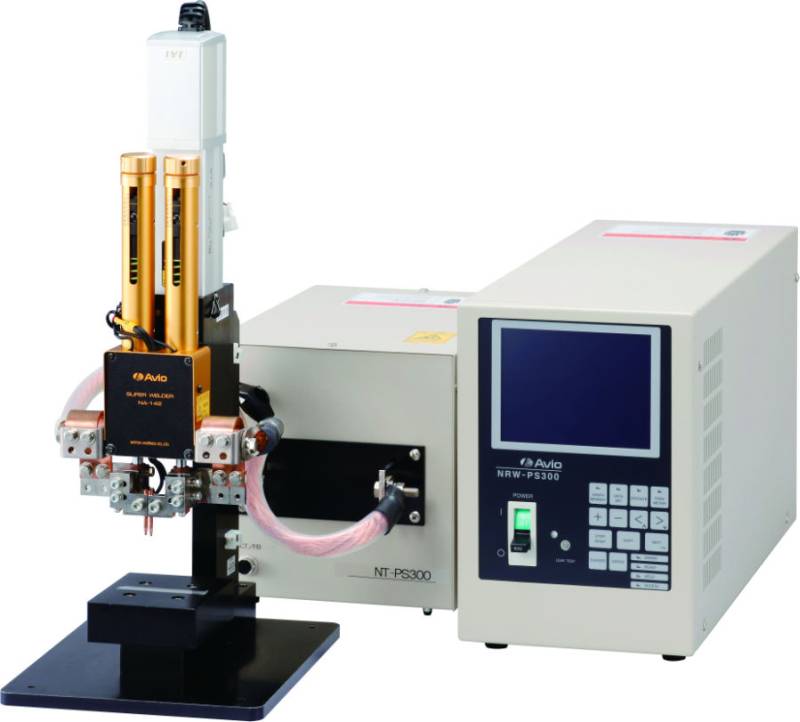 Professional battery tab welding machine
Professional battery tab welding machine
Spot welding notes
Series configuration spot welding
The electrodes are both on the same side. It is very important that the force of both electrodes is almost identical; otherwise one side will be welded poorly.
Opposed configuration spot welding
This is most used; the parts to be welded are clamped between the electrodes.
Weld current measuring
You can determine the weld current by measuring the voltage across a certain distance of the weld cable.
Calculate the weld current as follow:
I = U * diameter [mm2] / (0.0175 * length [m])
For the measurement of the weld current, two wires are attached to a weld cable at a distance of 44.5cm. The voltage at short circuit is 0.34V; so the maximum weld current = 0.34V * 25mm2 / (0.0175 * 0.445m) = 1100A.
Double pulse
A double pulse improves the weld quality. The first pulse, which is short, will soften the metal. The second pulse is the weld pulse. During the pause between the two pulses, the parts come closer together and make better contact.
Weld times
The first pulse, the pre-weld pulse, is 50ms. The second pulse, the weld pulse, can be set by the rotary switch in steps of 50ms. I found out that a weld time of 50 to 250ms works fine in many cases.
Weld current reducing
A welding current of 1100A may be too high, so a current reducing is useful. A 50W wire wound resistor of 27ohm in series with the mains reduces the weld current to about 400A. Note that the resistor is 120% overloaded, but the pulse overload capability of a WH50 wire wound resistor allows this.
A heater or hair dryer as power resistance
In order to determine which resistance was necessary to get a certain weld current, I took a heater and a hair dryer as resistors. These can be combined in series or parallel to get the desired resistance.
Spot welder construction
Plywood panel
All parts are mounted on a 15mm thick shuttering plywood panel of 15cm x 18cm. Note that the power board is an old prototype and has been replaced by the new spot welder PCB.

Microwave oven transformer
Try to get a transformer out of a defect microwave oven with a power of 800W ... 1100W, the higher the better. Note that some high power microwave ovens use an electronic HV power inverter instead of a transformer to save weight, you can't use these:
 Panasonic microwave oven high voltage power module
Panasonic microwave oven high voltage power module
Saw one side the secondary winding off with a metal saw. Then push the winding out of the core with a tailored wooden block and a large hammer. The magnetic shunt in between the primary and secondary winding limits the current and has to be removed:
 Remove the magnetic shunt
Remove the magnetic shunt
Use 3 secondary windings. You can glue them with PU glue, moisten it to let it lather.


Electrode arms
The two electrode arms are made of 20mm wide U-shape aluminium profile.
Electrode arms joint
Mount the arms together with a 4mm shoulder bolt:
The two aluminium arm joints and the shoulder bolt should be isolated from each other to avoid short circuit. Therefore the bolt-hole in the right aluminium arm joint is 2mm larger than the bolt diameter, thus 6mm. The isolation between the arm joints is created by epoxy printed circuit boards, of 80 x 20mm and 16 x 20mm.
The friction between the arms should be very low; this is created by the epoxy board between them. Also an epoxy board of 80 x 20mm together with an aluminium plate of 80 x 20mm is placed between the left arm and the plywood panel. Tighten the bolt in such a way that the friction is small but the clearance is not too high.


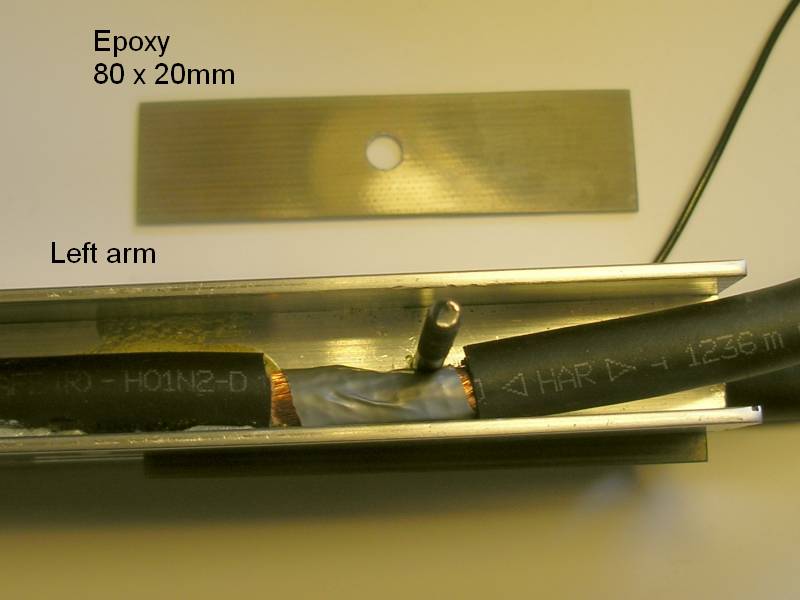

Electrode holder
The electrode holders are made of 20mm wide rectangular brass radiator earth clamp. Unfortunately these are in most countries not to get, I sell them HERE. Drill a 4mm hole in the middle for the mounting screw. Enlarge the hole for the welding cable to 7mm.
This earth terminal is not available in all countries. But there are good alternatives on eBay; search by "Terminal Grounding Bus Bar".
Welding cable
Use a flexible 3AWG / 25mm2 welding cable with a length of 140cm, this allows 3 windings. I have examined if a thicker cable give a higher weld current, this was not the case. The weld current is limited by the transformer itself.
Since the electrode force is critical, the welding arms should be able to move freely, not hindered by the stiffness of the cables. Therefore, the cables have a large bend. Don't use solid cable, welding cable is flexible and will cost just about $15/m.
Spot welder electrodes
It is important to use a pure copper bar. No brass or electrical wire, which is soft annealed. Use a square bar with the same size as the electrode holder slot, or file the bar to the appropriate size. I use a tip diameter of 1.5mm. To keep it simple you can file the electrode tip square instead of round. I sell suitable copper bars HERE.

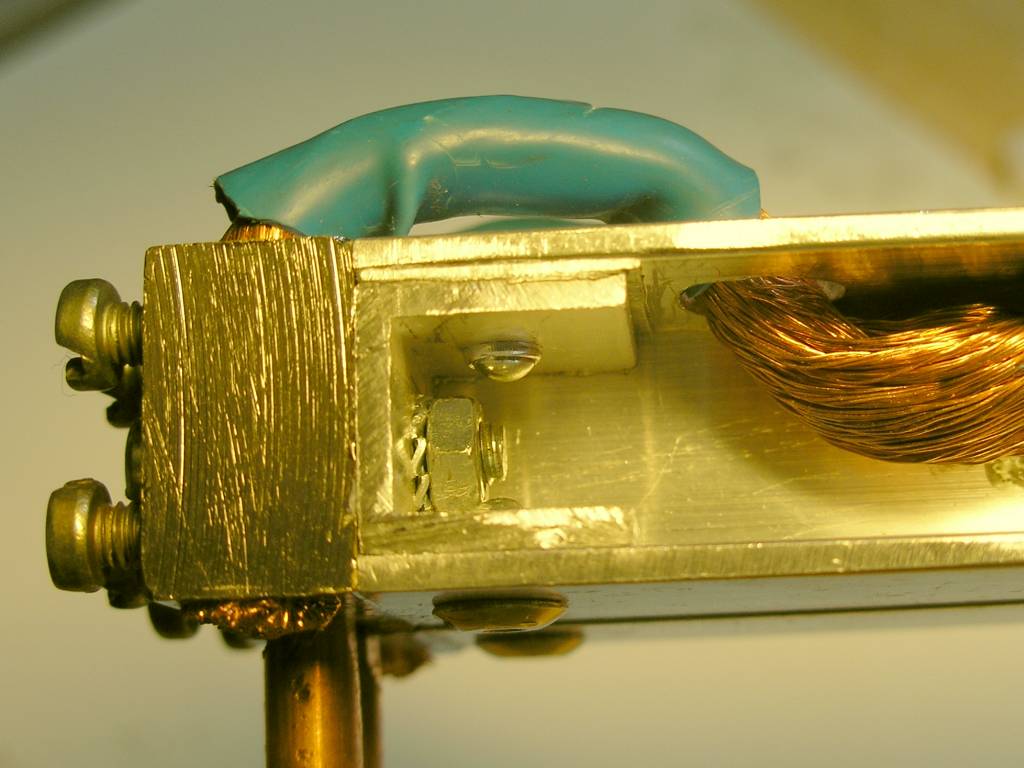
Clean the welding electrode tips periodically with sandpaper.
Spring clamps
The electrode force is an equally important parameter as the other weld parameters such as the weld current and pulse time. Here we use two small spring clamps. Adjust the electrode force by shifting the position of the spring clamp and measure the force with a kitchen weighing scale:

Press new spring clamps a couple of times completely in. You can change the clamping force by bending the spring. See here how to re mount a spring clamp:
Operating lever
I used nylon plate of 5mm thickness, which I have sawn out with a fretsaw. Other plastic materials can be used but may produce a beeping sound on aluminum.
Housing
The housing is made of 2mm polystyrene panel:




